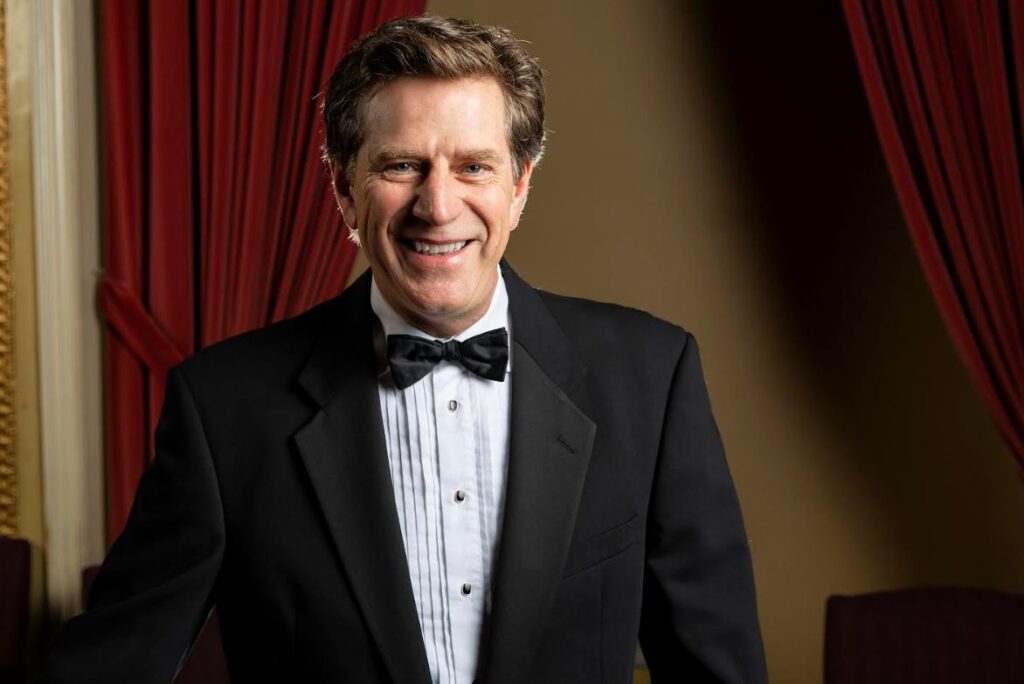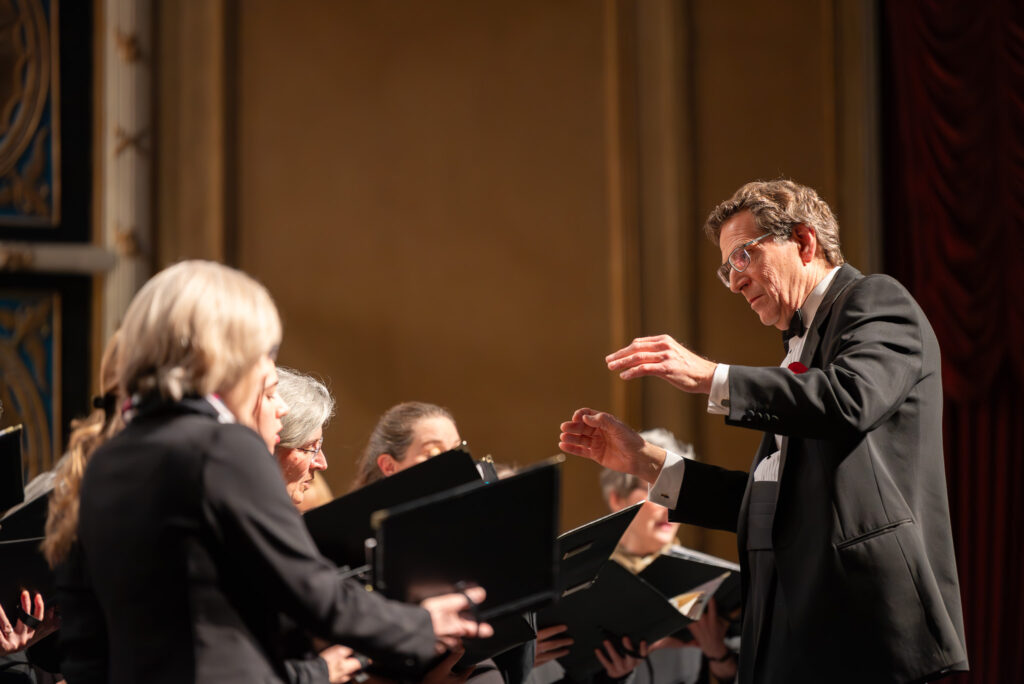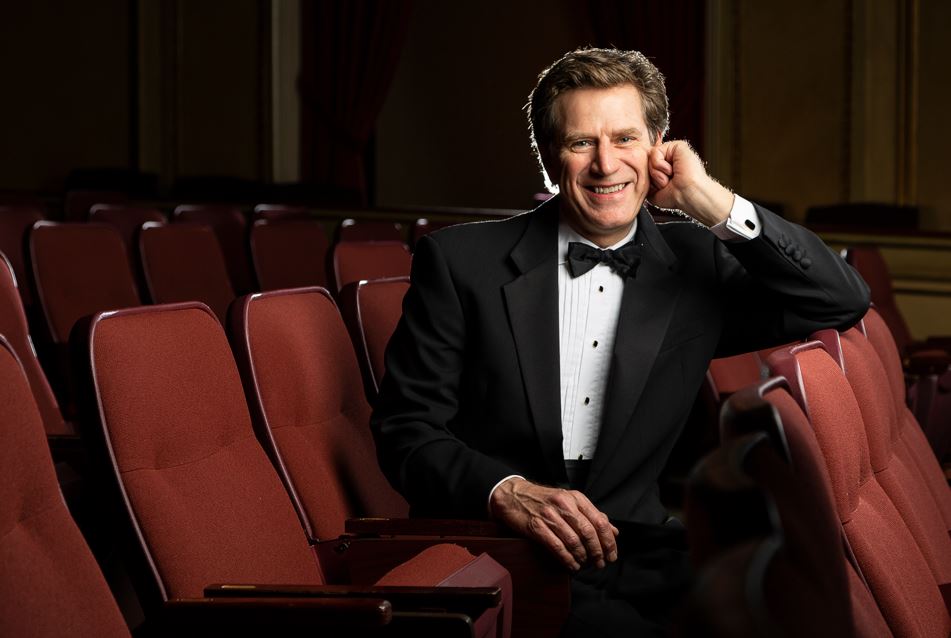After 17 years at the helm as artistic director and conductor of the Brantford Symphony Orchestra (BSO), Philip Sarabura has decided to retire.
Sarabura, who was born in Toronto, recalled his experience early on in music.
“I was fortunate to be able to attend the St. Michael’s Cathedral Choir School, which is in downtown Toronto on Bond Street. It was a regular school, but as part of the daily curriculum and extracurricular activities there, everybody sang in the choirs that were there for the cathedral services and also for concertizing in the Toronto area, and actually around the world. I started there in grade three, and up until graduation from Grade 13,” the veteran musician noted. “Along with the usual school subjects, there would be choral rehearsal every day and private lessons on piano, violin, organ, guitar, or on other instruments which were included in the school experience. When it was time for your piano lesson for example, the student would leave the classroom and go to the studios. Classroom activities were included like theoretical history, and music history among other subjects. It was a very immersive musical experience. And quite a number of very famous musicians have come from that school.”
Early on, Sarabura gravitated to both the violin and organ, as his parents encouraged it.
“My parents insisted that all of us kids take piano lessons and that was just expected at the choir school…you were actually required to take piano. From a young age, it was obvious I was musically inclined, and so I was encouraged by my parents as well as people at the choir school to pursue music. And since I really couldn’t do anything else, that’s what I did…I wasn’t very good at math and I didn’t like history…so, for me, music was the path I kept on,” he said. “Choral music [and] music in general was such an important part of daily life at the school all the way through my teens, I was very much influenced by that, by that experience, as were a great number of other musicians who have gone on to musical careers like me.”

After graduation, Sarabura had to make a career choice. He would go to the University of Western Ontario, noted for their respected music program. However, his focus was to play professionally, which he did while going to school.
“Going to university was largely just a convenience, because what I really wanted to do was get into performing on violin. By the time I was in my third-year university, I was already playing professionally with Orchestra London [and] performing the standard repertoire of orchestra music. It was a great experience, also being part of the scene as a freelancer playing all over London and Toronto with various groups and learning a great deal. It didn’t leave much time to finish school, and I didn’t end up graduating,” he explained.
After university, Sarabura would head out to Banff, spending several years there as well as a few summers at the Banff School of Fine Arts. He would then head back to Toronto.
“It was a purely conservatory performance-kind of environment where I had connections with a lot of the world’s great musicians and performers. I still remember those years very fondly. I then went back to Toronto at first, because there was a pre-professional training orchestra program at the Royal Conservatory…and it was from September to May, where we would rehearse and perform with them. The program provided musicians with a stepping stone between university finding a job in a professional organization,” Sarabura said. “I also got a chance to meet many more world-class musicians when they came to coach us in the training program. But then eventually left for Hamilton, because my family had moved from Toronto out to Ancaster. I had no real roots at that point…I then started playing with the Hamilton Philharmonic Orchestra and all the groups that were active in Hamilton around the early to mid-1980s.”

Sarabura continued to play violin professionally, and would get back to finishing his degree.
“My focus was entirely on performing violin, specifically with orchestra, so by the time I was in my fourth year at Western I was playing pretty much full time with the orchestra in London. The music degree that I was presumably going towards wasn’t important, so I kept dropping all my electives. At the end of four years at the university, I didn’t graduate, I just left as I was already playing professionally,” he said. “I didn’t get my degree from the University of Western Ontario until I was living in Hamilton. My mother guilted me into taking the required courses at McMaster to finish off my degree, and so I would have an actual piece of paper. She kept on telling me that it might come in handy one day. I started taking a few courses that…which the credits were then transferred to UWO, and I would end up getting my degree.”
However, during that time, the young musician would spend time with the McMaster University Choir, eventually becoming their conductor.
“While I was taking those courses, I found out about the McMaster University Choir, and coming from St. Michael’s Cathedral Choir School, I was always interested in choirs. I decided to join and really enjoyed singing with them for two years. The conductor would end up leaving his position, so the head of the music department asked me if I was interested in that role. I accepted [and] would conduct the choir for 16 years. That was a memorable time in my career…As I took this choir from sort of a ragtag bunch of singers that were not very organized both musically or administratively, and I changed the culture over the years,” the veteran conductor recounted. “By the time I was doing the choir for about eight years, I started performing with the Hamilton Philharmonic. We initially hired them for a number of concerts that we presented. We worked with the professional-level orchestra and all our critics and audience members were just delighted with how good the choir was. It was an excellent choir that got to quite big, growing to 100 singers before I left. And for the final concert, it was with the Hamilton Philharmonic, and we performed Gustav Mahler’s Second Symphony, which is a huge number for the choir [and made me realize] that it was the right time to leave for a new opportunity. The choir was a very accomplished group of people, and enjoyed my time there.”

After 16 years at the helm of the McMaster University Choir, Sarabura became a musical free agent.
“I was freelancing around the area; I eventually started playing violin with the Brantford Symphony. They would hire freelancers for their concerts, and so I was regularly playing with them for about ten years, back to when I first started playing. The conductor was Stanley Saunders, at the time, and who had been there for a long time (he has since passed). Then there were a few years of transition for the BSO, which was not going well for them…they were working in a group without a musical director [and] they were simply hiring conductors as necessary for each concert. They then decided they needed a director, and after a Christmas concert I conducted for them, Derek Bond, who was president of the board at that time, reached out to me. And like some things in life, I was in the right and at the right time, and I was offered the role,” he said.
As the newly minted artistic director of the BSO, Sarabura looked to make some important changes and move the organization in the right direction.
“The most important thing was consistency. I think that’s very important for the organization to have a consistency in how we things were being done artistically, especially in preparing for the concert season, year after year, and successfully executing all those concerts well. I think that was really important…to have that sort of a steady direction to take the orchestra forward. And then the other aspect was that the actual artistic product and what we were [offering] the audience. We started to do a variety of different programming. For one concert, it would be a very traditional symphony orchestra concert with a guest artist, or a soloist. But we also had [events with] a tribute band from London, Ontario…doing the best of Motown for example,” he explained. “We also worked with other pop musicians and we would present concerts that would appeal to different people. The overall direction over the years, was to make sure that we weren’t just catering to a particular audience. For the last couple of years, we worked with this group called the Sultans of String, and two years ago, we did a concert that featured indigenous music and musicians [which was] a fantastic program. Last year, we featured musicians, performers and composers from cultures all around the world, highlighting the immigrant experience here in Canada.”
However, while maintaining a diverse program every year, Sarabura also had to manage some challenges.
“One of the big challenges was to be able to present concerts on a restriction of having just one rehearsal for the concert, because we didn’t have enough budget to have more than one. So another challenge was to come up with programming that could be accomplished in the space of one rehearsal. Yet, despite that, we put on some absolutely fantastic concerts [because of] the quality of talent that we hired [which] was first class [as] we always picked the best of the freelance pool in southern Ontario. But it all took a great deal of preparation on my part, and…being able to do what very few productions could do [which was to] bring up a concert of this quality together in one rehearsal,” Sarabura said.

Nevertheless, there have been many highlights during Sarabura’s tenure, and a few stick out in his mind.
“There were a few concerts that I thought were particularly satisfying for me. One was a performance of a piece called Pictures at an Exhibition, by Modest Mussorgsky, a Russian composer. We did that one in either my first or second year here [at the BSO], and it’s one of my favorite pieces of music. We recorded the performance for archival purposes, and I listened to it afterwards, and it was stunning. It was incredible how great it was, especially after just one rehearsal, which people couldn’t believe it could be done, so that was particularly an exciting and rewarding experience,” he recalled. “We did another show called Sister Soul. It was a tribute show to Motown and all those female singers around that time, and that was a lot of fun. The singers that they brought were great and really captured the essence of that era. And we also did a concert with a fiddler from Northern Ontario, which was a success. And our Christmas shows are always popular. Through the years, I have spent a lot of time researching and listening to music [in order to put on the best] Christmas concert each year…and we would usually feature a guest choir or guest soloists. Over the course of the last ten years or so, we put on some great performances during the holiday season, which really showcased our talented orchestra and were loved by our audiences. I have a lot of great memories of those shows.”
However, for the talented musician and conductor, the thought of retirement has been looming for the last year and a half. Sarabura will officially be retiring from his roles at the BSO at the end of the 2025-26 concert season.
“One of the things that unfortunately happens sometimes in the orchestra world is the music director doesn’t want to go, and it becomes a very tense and difficult situation [especially if the] board and the orchestra recognize that it’s time for some new blood [in order to try] new ideas. But the incumbent won’t leave without a fight…a battle ensues, and nobody wins. The orchestra and the organization as a whole ends up taking a big hit from the audience. I have seen this happen a number of times before,” he stated. “For me, I wanted to leave when the organization and the orchestra were riding a wave, and I felt it was the right to leave now. Another factor is I have been doing this for 17 years…planning an orchestra season and presenting it along with the pressure of the budget, and satisfying the audience [as well as] managing the musicians with [limited] rehearsing. And of course, the pressure from the board in making sure we are delivering the product that we are proud of every single time. I know that has been my job, but it has been wearing me down a bit. And it’s simply time for me to take a bow and exit the stage. It’s just time for new blood too.”
By retiring from the BSO, it doesn’t mean an end to Sarabura’s musical career. He will continue with his various musical endeavours, yet is open to taking on new opportunities.
“I will continue to be part of a choir group in Hamilton called the Strata Vocal Ensemble. We have two concerts a year…it’s not a very heavy schedule and it’s a good choir and I enjoy doing that. I will also continue to be a member of the Hamilton Philharmonic, while freelancing around Ontario,” he said. “It would be nice if I could maybe take on some conducting opportunities with other orchestras across the country…But I am well past retirement age, so maybe it’s time for me to work on my project car, or do some carpentry work that I’ve been wanting to do or simply take some time to relax…I will keep an open mind to anything that comes my way [but truthfully] I would be perfectly happy not working so much,” he said.
